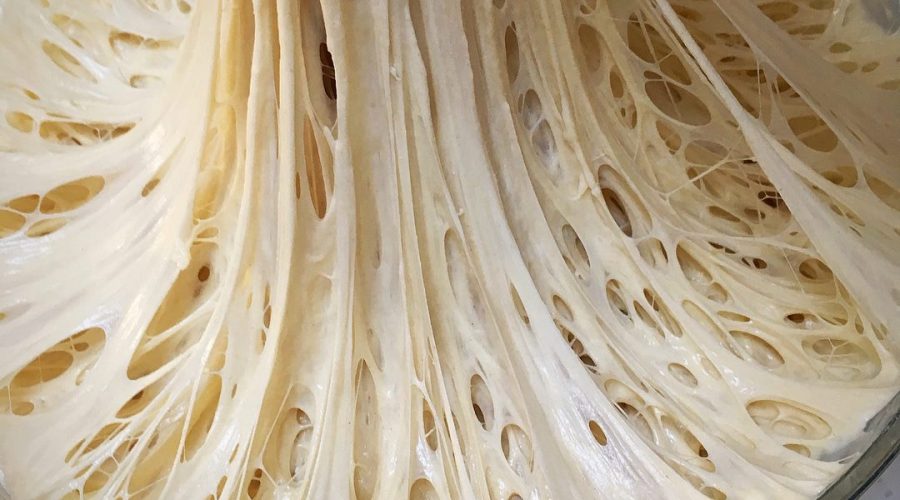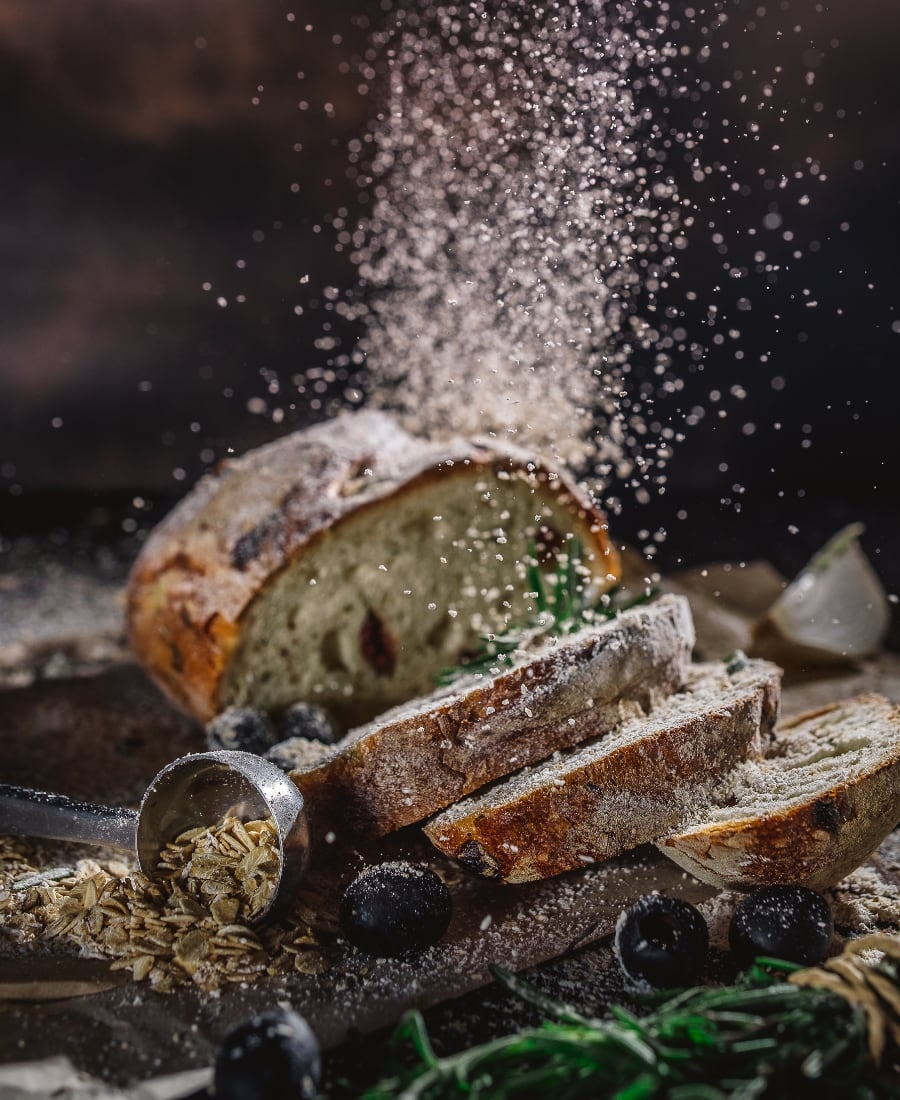I’m Elaine Boddy, some of you may already know me as Foodbod Sourdough, and this is an image of my dough following its overnight prove (aka bulk prove/ferment/first prove). The dough has risen and more than doubled in size and you can see the fabulous texture all the way through the dough – these are all of the strong gluten strands which have developed up to this point. It’s a joy every time I wake up to a sight like this, it never ever gets boring!
Bulk Fermenting
The results shown here are based on my master recipe process ( https://foodbodsourdough.com/the-process/ ) where I bulk prove my dough overnight on the counter, however, if you bulk prove differently, the same information applies.
Bulk fermenting is an important step in the sourdough process, for several reasons:
1. It ‘proves’ your dough for the first time – many people who are concerned about how their loaves have come out assume their Starter is the culprit, this may be the case, but keep this in mind: if your dough is growing and doubling during the bulk ferment, your starter is fine and working well, the dough shows you that.
2. It gives the dough time to build strength and elasticity.
3. It starts to build flavour
Troubleshooting
Achieving dough expansion is important. If your dough isn’t doubling or growing during this part of the process, there are some reasons why this may be happening.
1. The ambient temperature was too low – temperatures under 18C/64F will slow the growth of your dough down; just give it a few hours longer in the morning to do its work. You can even give it another round of pulls and folds to wake it up then a few more hours to prove.
2. Your Starter needed a little boost – Boosting your starter is easy, and simply done with a couple of days of aggressive discarding and feeding. Try feeding at least twice a day in the lead up to baking. ( https://foodbodsourdough.com/how-to-boost-your-starter/ )
So we’ve dealt with under proving due to the dough being too cold, or a weak Starter, then there is the risk of over proving! If it’s been warm overnight, well over 20ºC/70ºF, your dough may grow fast and possibly more than double, it will look volcanic, active, bubbly and fabulous, however, it risks over proving and losing all structure and integrity, basically it will become more Starter and will be soft, sloppy and impossible to work with. There is no coming back from this as far as structure goes. ( https://foodbodsourdough.com/making-sourdough-in-hot-temperatures/ )
Getting it just right
Under proved dough will result in a dense loaf with large uneven holes. On the other hand, over expansion and fermentation – over proved dough – will result in a flat, dense, bake, but it will still taste good and the extra fermentation may even increase the sourdough flavour.

So how do you get it right? Firstly try bulk proving during the day so you can watch your dough, if it grows quickly, almost doubles and starts getting bubbly, it is moving towards being over proved. Move it to a lower temperature. If you are short on time and fear over proving, shove it in the fridge and come back to it later. Or it has almost doubled and you have time, get shaping, get in into a Banneton and get it into the fridge.
To do the bulk ferment as an overnight process and combat warmer temperatures throughout the year, the simplest and easiest solution is to use less starter in your dough recipe. Less starter in a dough means the dough grows more slowly, and in the warmer temperatures, this is a perfect solution.
As a guide to getting the perfect first prove, when you handle your dough it should feel bouncy and have some nice resistance. Under proved dough will still be stiff. Over proved dough will be sticky, and soft, and hard to shape or do anything with.
My best tips are:
- Learn to watch your dough and not the clock; your dough well tell you what’s happening and what you need to change, if anything
- Get to know your Starter
- Get to know your flours and your doughs
- Get to know how sourdough works in YOUR home
- Make notes, jot down timings, and temperatures, flours and behaviours, and create your own reference guides
More importantly, resist the temptation to compare your doughs and bakes with others. Every creation is different due to different flours, different temperatures, different environments, different handling and different ovens. The key is to understand yours and how your dough behaves in your kitchen for you.
And the good news is… It’s very rare that a loaf won’t taste good!
Happy baking!
x Elaine x
Website: https://foodbodsourdough.com/










2 thoughts on “Perfectly Proved Dough … I love seeing this!”
I love your book, The Sourdough Whisperer! I bought myself and my 2 married daughters each a book and they love it too. It is so helpful when learning the many techniques. Thanks for your efforts!!
Thank you so so much, I’m so glad you’re happy and enjoying it xx